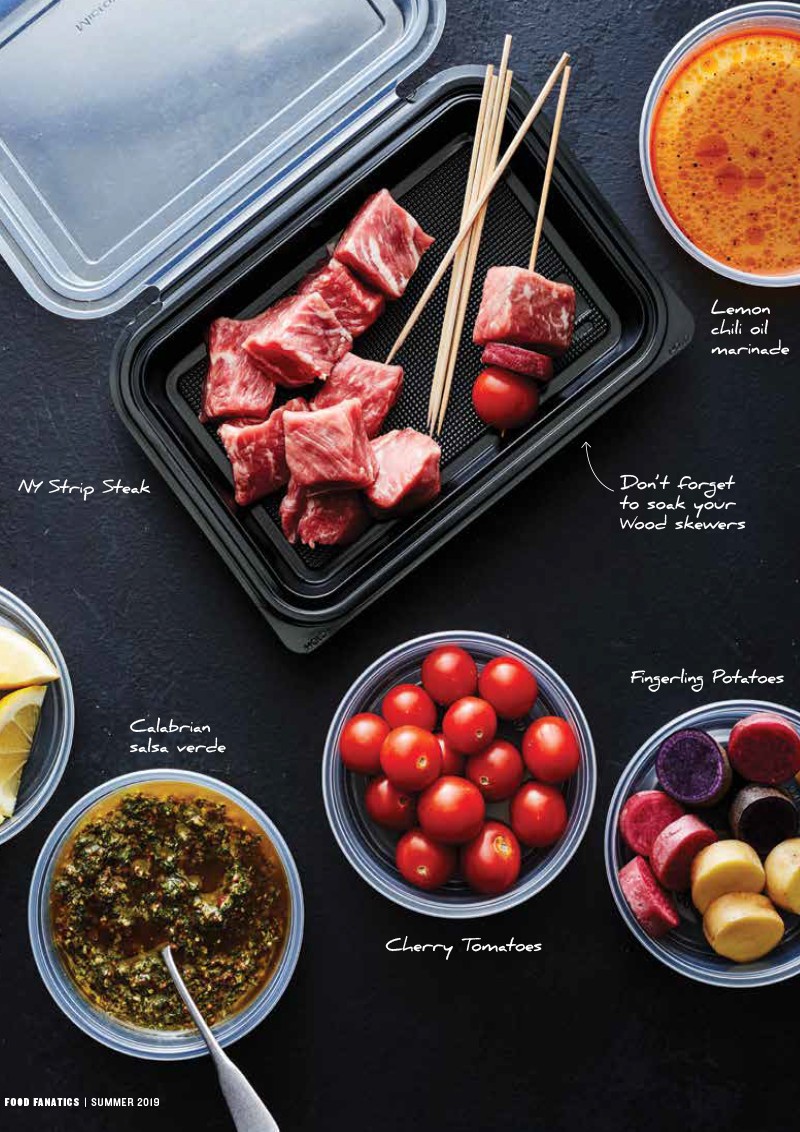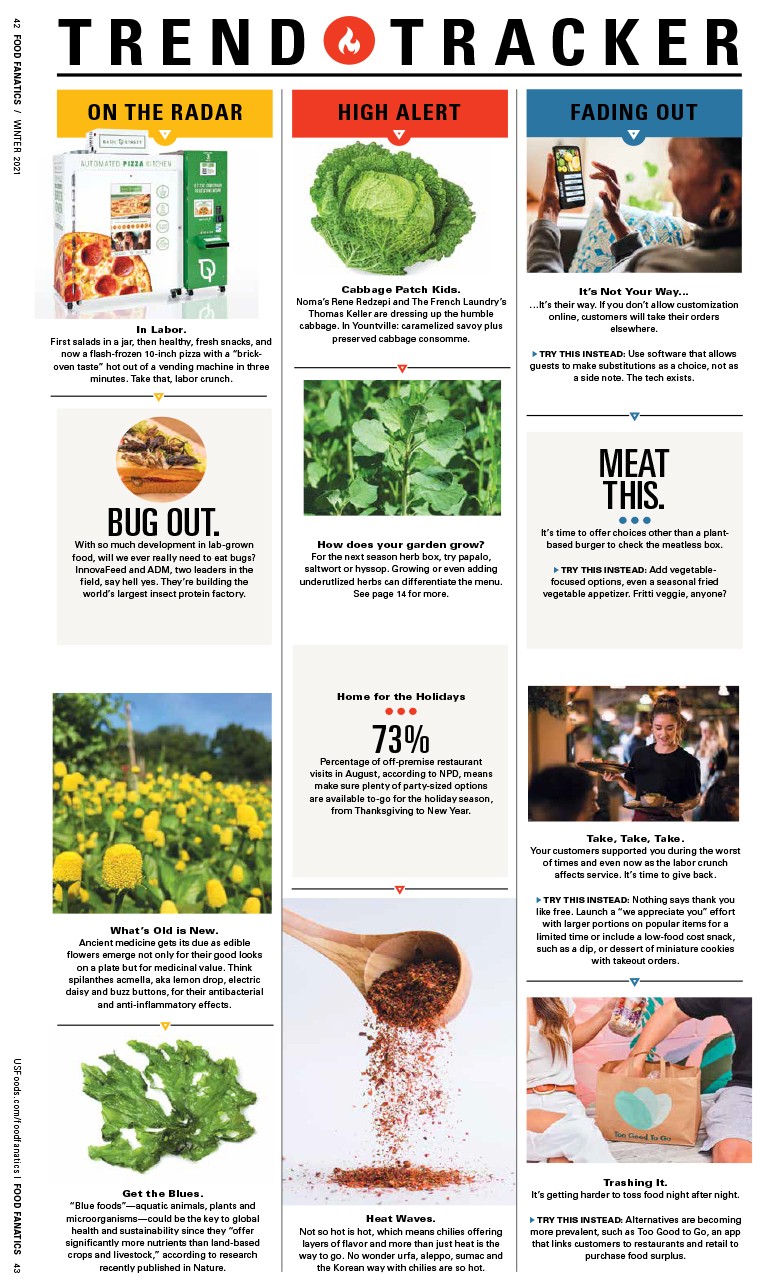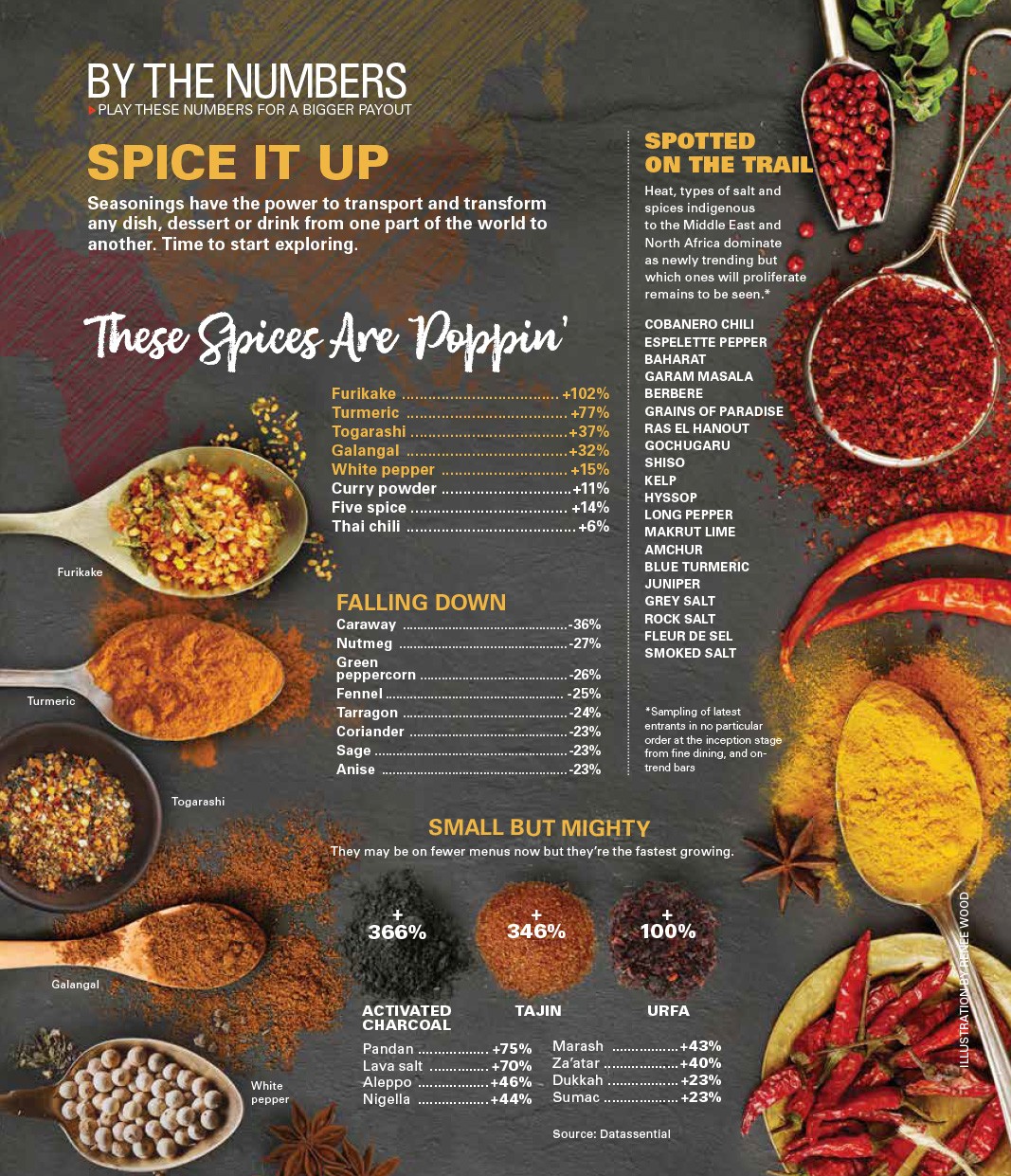OUT OF THE BOX
Get a Taste of the Meal Kit Action
Over the last 13 years, Sera Cuni has sold tens of thousands of weekly to-go meal kits right through the front doors of the Root Cellar in Chapel Hill and Pittsboro, North Carolina. These scratch-made, locally sourced dinners – such as mojo pork tacos with refried beans and brown rice, or braised short ribs with mashed potatoes and roasted vegetables – have built a following among fans of the 21-year-old institution. Busy families. University students. Young professionals. They all line up for them. So what advice does she have for operators thinking of supplementing their dine-in business with grab-and-go and deliverable meal kits, at a time when ease and convenience are driving consumer decisions more than ever? “I would say watch out for Blue Apron and Hello Fresh, because they’ve taken a big hit out of the market,” she says. With experience comes wisdom. According to industry consultants Pentellect, the $2.2 billion meal kit industry will grow 25 to 30% by 2022. That’s a credible threat to brick-and-mortar restaurants. Why? “…They are bringing the experience of eating out to the home,” wrote Bob Goldin and Barry Friends in a 2017 report, “with experience defined in the context of differentiated recipes, specialty ingredients, variety, a ‘fun’ factor and overall high quality.” But there’s no reason chefs and restaurant owners can’t take a piece of the action, especially now that Blue Apron is losing market share.
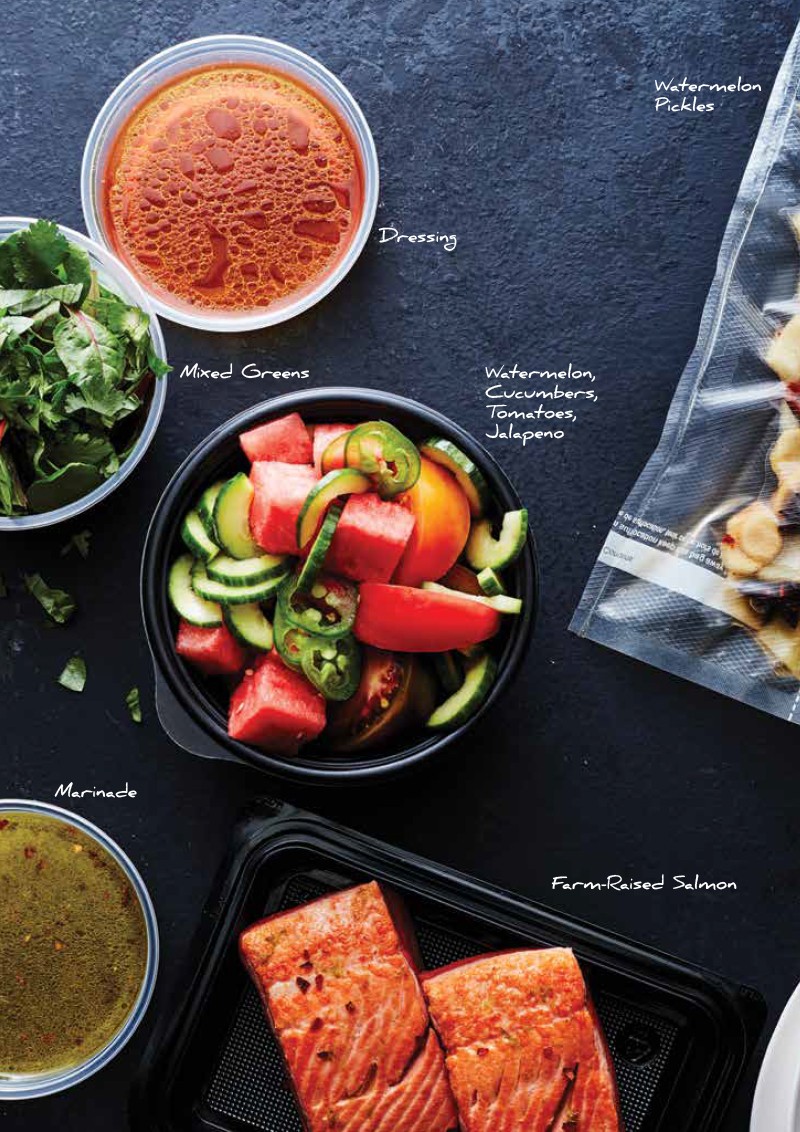
 Industry experts say the subscription model has worn thin, while the novelty has worn out among millennials who see dinner as a last-minute decision. The restaurant industry has a distinct advantage. Independent operators, large and small, are building on unique concepts, loyal followers, and nimble social media marketing to reach customers who’d love to eat their food, off-premise, in the comfort of their own mental (and physical) pajamas.
Industry experts say the subscription model has worn thin, while the novelty has worn out among millennials who see dinner as a last-minute decision. The restaurant industry has a distinct advantage. Independent operators, large and small, are building on unique concepts, loyal followers, and nimble social media marketing to reach customers who’d love to eat their food, off-premise, in the comfort of their own mental (and physical) pajamas.
SPREAD THE WORK AROUND
Chef Iliana Regan offers fans of Kitsune, her Chicago Midwestern izakaya, the chance to pick up two different assemble-at-home ramen kits every Saturday for a month for $100. All the instructions, says Regan, are included, so even the most inexperienced home cook can assemble them. They require heating a quart of broth and pouring it over the noodles. Customers then rewarm the egg, add pickled green beans and preserved lemon, then top it with the meat. And for those seeking an extra kick, there’s some chili paste or tare.
THE BENEFIT:
By capping production at 25 kits a week and spreading the prep among her staff, the boxes can generate $2,500 a month. “There’s our rent,” says Regan. In the restaurant, Regan charges about $15 per person to offset ingredient, rent and labor costs, but when the ingredients are picked up, it’s possible to drop the cost to $12.50, a far more attractive price point.
TAKE A TIP:
Regan initially produced almost 200 soup boxes a week, and used a third-party service for delivery. But quality control became an issue when meal kits were left in a mail room unrefrigerated, or “in a bush or behind a gate that they didn’t normally use,” she says. Regan reduced the number of kits, which are now picked up by customers, and the prep is divided among staff throughout the week. “Making 50 portions of ramen a week is nothing we can’t do in our regular prep time,” she says.
ADDED BONUS:
The kits have provided her chef de cuisine, Ian Jones, an outlet for research and development that’s produced recipes like shio mushroom, duck confit and chicken yuzu—all of which have been offered on her regular menu at some point.
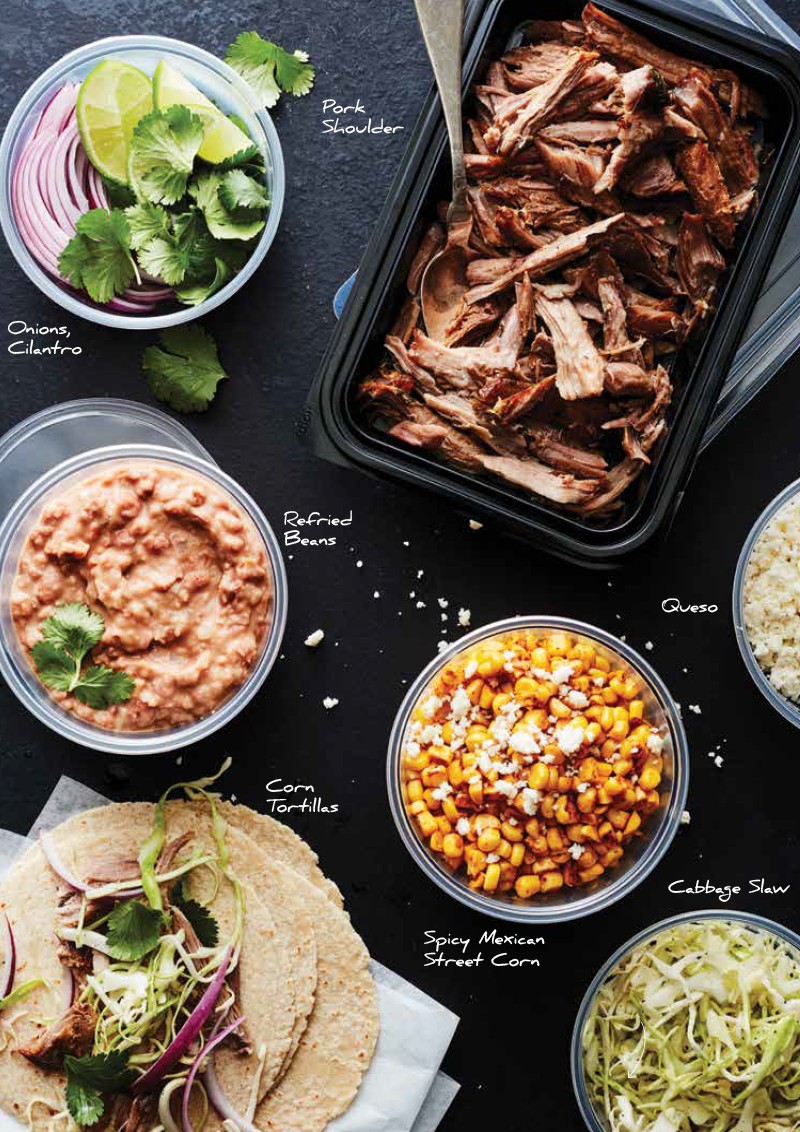
FIND A TARGET MARKET
 While meal kits are usually focused on dinner, Leanne Valenti of Bento Picnic in Austin, Texas, identified an unmet need for high-quality lunches, especially for busy professionals and office managers. In 2015, she developed ready-to-eat lunch boxes inspired by the Japanese principles of washoku. Every meal incorporates five colors, five tastes, and five elements, but an array of options cater to different tastes. Think hormone-free pork teriyaki meatballs, Japanese pumpkin and potato salad, and organic tomato salad – or cremini mushrooms and sesame soba noodles with seasonal veggies, house pickles and creamy tamari sauce.
While meal kits are usually focused on dinner, Leanne Valenti of Bento Picnic in Austin, Texas, identified an unmet need for high-quality lunches, especially for busy professionals and office managers. In 2015, she developed ready-to-eat lunch boxes inspired by the Japanese principles of washoku. Every meal incorporates five colors, five tastes, and five elements, but an array of options cater to different tastes. Think hormone-free pork teriyaki meatballs, Japanese pumpkin and potato salad, and organic tomato salad – or cremini mushrooms and sesame soba noodles with seasonal veggies, house pickles and creamy tamari sauce.
THE BENEFIT:
By focusing on corporate catering, Valenti found it was a lot easier than trying to reach a hundred people who wanted one box ($12 each). “Now we’re straddling the restaurant-prepared meal model with our storefront,” she says. “We just have a static price and are flexible with what works within that price.”
TAKE A TIP:
Go slowly. Valenti gradually developed her grab-and-go business at farmer’s markets, then opened inside a gym frequented by busy professionals. Now she has a storefront and dine-in destination attached to her prep kitchen. The setup allows for seasonal menus, a steady food cost and price point.
ADDED BONUS:
Leftover rice led to a cracker recipe that’s now a big hit on her catering menu.
GO BIG ON YOUR BRAND
St. Louis chef Katie Collier built her following on the good name of her two Katie’s Pizza and Pasta restaurants to launch Vero Meal Kits two years ago. “We thought we might be able to create a niche just doing Italian food,” says her partner and mother, Belinda Lee. “We saw the meal kit trend, but we saw most of their recipes were broader than what we do.”
THE BENEFIT:
Variety sells. Every two weeks, Vero offers a new pizza option (say Fresno chili and pancetta pie) and pasta plate (shishito pepper and chicken spaghetti) that’s prepped and packaged in a 2,000-square-foot commercial kitchen. “You have to look at your competition. If they’re charging $50 or $60, you can’t start charging $75. Or there has to be more in the box.”
TAKE A TIP:
Packaging matters. Vero kits arrive with individually portioned and packaged ingredients – such as the steak and marinade for grilled kabobs – chilled with ice packs and insulation. Plus, chef’s hats and coloring pages are thrown in for the kids. Sometimes recipes cards alone don’t work, email and Facebook are regularly checked to provide assistance. “Customer service is almost a full-time job.”
ADDED BONUS:
Collier’s prep kitchen allows her to ship kits overnight as far west as the Rockies, south to Texas and parts of New England, broadening her client base.
